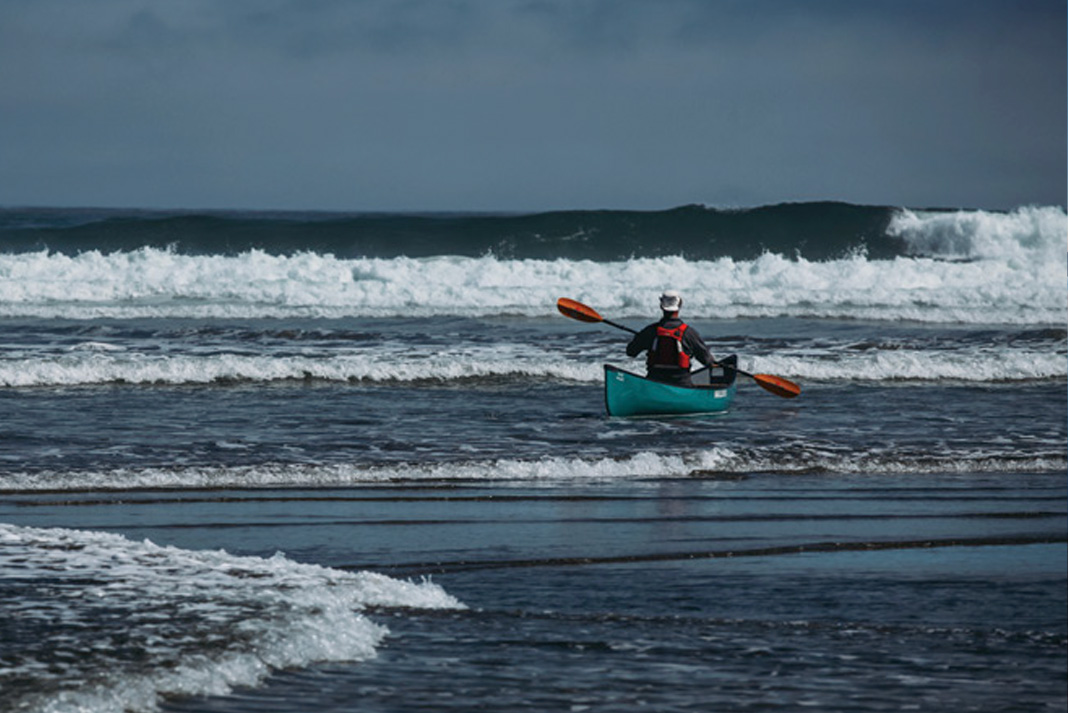It is possible to launch or land a canoe in waves and rough seas, however it’s best to avoid these conditions altogether by getting off the water before waves build to a dangerous point. Even in perfectly calm weather, canoeists should be constantly assessing the shore for landing points, protection and campsites. Yet sometimes, rough-water launches and landings will still be necessary. Follow these tips to launch and your canoe safely in rough water.
How to launch a canoe in rough water
A few words of warning
If caught out in the open when conditions change, it may make more sense to keep your canoe in the water even amid small swells rather than risk navigating large breaking waves to reach land—it’s up to each paddler how to weigh these risks. Launching and landing in breaking waves can be an exhilarating challenge, but waves much larger than two feet tall give canoeists a very low chance of success. In most cases, this is considered an emergency situation on a canoe expedition—don’t paddle out in these conditions.
If the waves are spilling onto a low-angled shore, it is much easier to launch or land a canoe, as the height and steepness of the waves will not be outrageous and the run-out onshore will be long. If the waves are dumping on a steeply angled shore or onto underwater features, however, swamped boats will probably result.
One at a time, and no surfing
The ideal beach for learning how to launch and land a canoe is low-angled and sandy. If the waves are moving along the shore or at an angle, it will be fairly straightforward; waves moving perpendicularly in to shore will be more challenging but potentially more predictable. The key is for each boat to stay in control by not surfing, moving slower than the waves, keeping the boat perpendicular to the waves, and ideally paddling through breakers during a lull.
One boat should move through the hazard at a time. Helmets are a good idea in this situation. Avoid being in the path of a loaded canoe, whether or not it is under control or swamped. Try to choose campsites with multiple facets or undulating shoreline when possible, as no matter which way the wind shifts there will be areas of protection.
How to handle a capsized canoe
In the event of a capsized canoe, one strong team of paddlers should land, pull their boat well onshore then help the swimmers out of the water. The swamped canoe may be allowed to drift in, or a throw bag attached to it can be thrown to shore and the boat then pulled in. As boats come in, they should be quickly unloaded or suitcase carried out of danger.
Surf’s up! | Feature photo: Jen Gardiner

“suitcase carried out of danger”– What does this mean ?
Hi Dave, please see here: https://aqoutdoors.com/a/blog/how-to-transport-a-canoe-proven-techniques#mcetoc_1fpqdifiu1